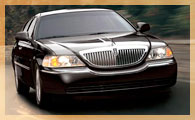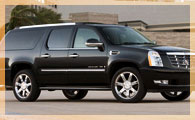Arizona Summer vs. Your Car. Win the Battle.
If you find your self living anywhere where it gets pretty hot in the summer, you’ll want to know what locals know about summer car safety. Having the right items–and never having the wrong items–in your vehicle will make driving in the heat a much safer and enjoyable experience.
If you ever park outside during the summer months, your car will heat up quickly. Heat coming in through the windows is absorbed by the interior, and the glass acts as an insulator. The temperature in your car get up to 200 degrees, depending on the temperature outside, the kind of vehicle you have, and how long it has been in the sun.
Before we get to some other tips, here are a few words about children and pets. Do not ever leave children or pets in a closed car. It doesn’t take much for heat stroke to set in, or worse. Every year children and pets die in cars. Small children and animals are not able to open a window or open a door like you can. Typically, they will be quiet as heat overcomes them, so there won’t be crying or other audible indications of trouble. Cracking the windows does not help; it doesn’t prevent the temperature in the car from rising. Leaving children and pets inside a closed car, or even one with the windows rolled down, is dangerous, deadly, and illegal. Report children or pets in hot cars to the police immediately by calling 911.
Five Tips About Hot Cars
- Park in the Shade
Too obvious? Walk a few extra steps if you see a tree nearby. Be aware, however, that trees mean birds, and you may have debris or bird droppings on your car when you return. If you can’t park in the shade, pick the best direction. Say you’re at the mall at 3 p.m. Which is the best way to park? The sun sets in the west, so you don’t want to be facing west. Try to park in the direction where the sun will be shining on your rear window or passenger side for most of the time it will be parked. - Window Tinting/Sunshades
Mitigate some of the effects of the sun by having your windows tinted. Arizona’s laws regarding window tinting are not as strict as the window tinting laws in many other states. Basically, Arizona law says that the front side windows must allow at least 35% of light to pass through the tint. If window tinting isn’t in your budget right now, then you can eliminate some of the heat by purchasing a windshield sunshade that you place on the inside of your windshield when you leave your car. This prevents the sun from beating on your dashboard and steering wheel. Dashboards don’t like the sun or heat. If you don’t cover them, they will fade and crack. Steering wheels, of course, get extremely hot, cause burns to the touch, and result in unsafe driving when you can’t really grip the wheel. There are also removable side window screens, if you have passengers in the rear who want a little relief from the sun on long road trips. - Service Your Vehicle
In hot dry climates, cars need special care. Frequent oil changes and belt checks are a must. Batteries die faster than everyone thinks they will. Make sure fluids are full. - Items You Should Have in Your Car
Common sense says that you should always have a spare tire and a first aid kit. Here are some additional items that you might not think of if you aren’t used to living in a hot climate.- Extra water, for drinking and/or for the car.
- Steering wheel cover. A cloth cover (not leather) make allow you to comfortably handle the steering wheel after the vehicle has been standing in the sun. You can also use a small towel or handkerchief. If you don’t have a windshield sunshade, place the small towel on a leather seat before you leave the car so you can get in and sit down when you return. If you’ve never had the experience of sitting on leather when you’re wearing shorts, and that car has been outside in 120 degrees for a couple of hours….ouch!
- Snacks, such as granola bars or small bags of crackers.
- Cooler or insulated shopping bag. If you are shopping and you have a bit of time before you can get home, a cooler with an ice pack or insulated shopping bag will keep those frozen items from melting, or that fresh fish safe, before you get there.
- Cell phone, so you can call if you get lost or get into trouble.
- First aid kit. Items you should consider include ice packs, ace bandages, wrist brace, sunscreen, tweezers, x-acto blade, batteries, (girl stuff), and various meds like Benadryl or Motrin.
- Emergency kit. Items you should consider include a flashlight, flares, jumper cables, blanket, extra clothes and gloves, paper towels, and some basic tools like wrenches, a ratchet and sockets, screwdrivers and pliers.
- Items you Should Not Have in Your Car
Think about it–does it make sense to buy a milk chocolate candy bar and leave it in your car in the heat? Believe me, no matter how smart we all think we are, at one time or another we’ve been dopey and left something we shouldn’t have in the car. Hopefully, there wasn’t a large cleaning bill as a result.- Milk and other dairy products.
- Anything packaged under pressure, like hair spray or soda pop.
- Tapes, CDs, or DVDs.
- Sunscreen in a bottle. Buy little packets or towelettes.
- Crayons, candy, gum, lipstick.
- Credit cards or other cards with magnetic strips on plastic.
- Cleaning solutions with alcohol or ammonia.
- Anything that didn’t have a decent smell before it reached 115 isn’t going to smell any better after it’s been left exposed in direct sunlight all day.
- After shopping, check your trunk carefully to make sure nothing has fallen out of the grocery bags. You really don’t want to find those eggs or that salami a week later.


